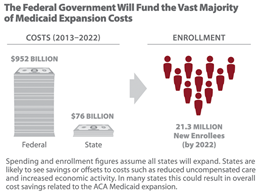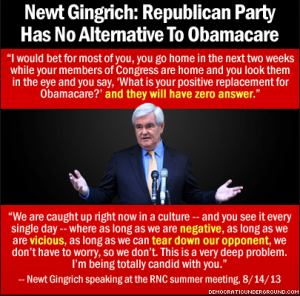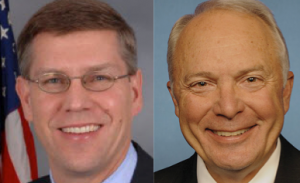When it comes to the 2014 legislative elections, I have divided loyalties.
One the one hand, the current DFL-controlled Legislature has delivered a lot of very good things for ordinary Minnesotans. Compared to the previous GOP-controlled Legislature, the DFL-controlled Legislature has delivered a healthier economy, budget surpluses, more tax fairness, marriage equality, job-creating infrastructure improvement projects, paid back schools, all-day kindergarten, early education scholarships and a long overdue increase in the minimum wage, among other things.
In the most recently concluded session, they even had the earliest adjournment in thirty years, a mark of impressive democratic efficiency. I look at that record and conclude that the DFL Legislature and Governor deserve to be rehired in the upcoming elections.
 On the other hand, as a blogger interested in the absurd side of politics, I’m pulled mightily in the opposite direction. Because when it comes to generating a steady stream of blog-worthy absurdity, nothing beats the modern Tea Party-backed Republican Party. After all, the last time the Republicans controlled the Minnesota Legislature they:
On the other hand, as a blogger interested in the absurd side of politics, I’m pulled mightily in the opposite direction. Because when it comes to generating a steady stream of blog-worthy absurdity, nothing beats the modern Tea Party-backed Republican Party. After all, the last time the Republicans controlled the Minnesota Legislature they:
- Marriage Hypocrisy. Piously pretended to “protect marriage” by day while it destroyed marriages by night;
- Job Creation Duplicity. Claimed they were singularly focused on “jobs, jobs, jobs,” but refused to fund capital investment projects that would have created thousands of jobs;
- No Separation Between Church and Hate. Found a way to make even the daily ecumenical prayer controversial and divisive;
- Confederate Envy. Proposed to create a state currency and allow nullification of federal laws, which may not be what Abe Lincoln had in mind for the party he founded;
- Hallway Robbery. To avoid balancing the budget, raided Minnesota kids’ schools budget like it was their personal ATM machine;
- Shutdown Sanctimony. Wasted millions shutting down state government, while lecturing DFLers about how they alone know how to make government operate efficiently;
- Dehumanizing Kids. Warned that supplying food stamps to Minnesota’s most vulnerable children is just as inadvisable as feeding wild animals; and
- Role Modeling Fiscal Responsibility. Lectured DFlers about not spending more than they are taking in, even after the Republican Party stopped paying its bills…because it spent more than it took in.
I get tears of joy just thinking about it. I was never in need of blog topics in those days. Minnesota’s last GOP-controlled Legislature gave us the golden age of political comedy, and I will forever be grateful to them for that. Memories, misty water-colored memories.
While a historically low 17% of Minnesotans approved of the GOP-controlled Legislature that was drummed out of office in 2012, Wry Wing Politics has sorely missed having the likes Mary Fransen, Steve Drazkowski, Mark Buesgens, Tom Emmer, Curt Bills, Kurt Zellers, Dave Thompson, Amy Koch and others in positions of authority, where they had more opportunities to say and do ridiculous things.
The topic-hungry blogger in me pines for the hot mess of a Legislature that Teapublicans built. But deep down the responsible citizen in me knows that I need to vote to bring back the DFL’s brand of colorless competence. Sigh.
– Loveland
Note: This post was featured as a “best of the best” in MinnPost’s Blog Cabin.
























